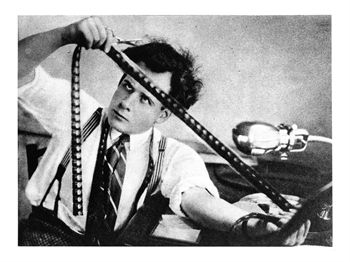 It is always easy ‘to add more’ in your quest for a more engaging website. Add more content, add more fonts, colours and textures, add more interactive elements and animations. But all this extra stuff comes at a price; adding more elements equals more visual noise for your website visitor to filter. Before they can get to the content they have to wade through all the latest news, tweets, blog articles and customer testimonials, prompts for keeping in touch and sharing the content, most popular and read pages, and so on … all these distractions make it much harder to get to the content they want.
It is always easy ‘to add more’ in your quest for a more engaging website. Add more content, add more fonts, colours and textures, add more interactive elements and animations. But all this extra stuff comes at a price; adding more elements equals more visual noise for your website visitor to filter. Before they can get to the content they have to wade through all the latest news, tweets, blog articles and customer testimonials, prompts for keeping in touch and sharing the content, most popular and read pages, and so on … all these distractions make it much harder to get to the content they want.
As a designer, managing all this content is also one of the main challenges of website design. But it is too easy to get carried away with ‘more’ when designing. You add an extra graphic or two, liberally apply textures and gradients, use a generous colour palette and add more fonts.
With the success of mobile devices, ‘more’ is becoming increasingly difficult to add. With limited screen space available, we need to question everything … and this is a very good thing!
Question everything throughout the process – start at the beginning
Having immersed yourself in the brief, you start to map out the user journey using sitemaps and wireframes. Decide what is the most important thing on each page, and how the visitor will interact with it. Analyse and question every element you add to the design, and map it against this main purpose. If it doesn’t fulfill that purpose remove it!
Consider browsing habits. As people are increasingly active on the Internet, they are getting better at turning a blind eye to certain areas of content. All those carefully designed sidecars encouraging users to click may get completely overlooked, and only end up making the web page appear cluttered. Consider removing all unrelated content, and moving some of it underneath the main content so you help guide the visitor’s experience.
Immerse yourself in the content
Read and fully understand the content of the website. This can often be overlooked during tight deadlines, but it is an essential part of the design process. After all, you are making the content engaging but if you don’t read it how can you? Identify the main points in the content and emphasize those in the design, so that you make it easier to scan and read it .
Learn to design without all those frills
Does adding that texture or gradient add value? What are you trying to achieve with that extra graphical element? Can you achieve the same result with less? When creating graphics for the design, you need to be mindful of the brand aesthetic but also the user experience. Adding more means there is more for the visitor to look at, so question every element you add and make sure it fulfills the needs of the brand and user.
Less is more
We have all heard this phrase before, and there are plenty of articles on the Internet about it, so we don’t need a further explanation here. Less is more should always be part of the editing process: can you achieve the same results or better with less? As you question each extra element and filter out the noise, your design will ultimately become less busy and more readable.
Question yourself
Be honest with yourself. It is easy to justify adding that lovely wooden textured as the background effect makes your design look beautiful and your visitors will love it, but does it really? Remember that you are designing for your target audience, so you should design the content around them.
Keep it up
Don’t ever stop. Don’t sit back believing you have mastered website design and no longer need to edit because you know all the tricks. As browsing habits change, technology advances and new things arrive every year it’s important to keep editing so your designs remain relevant.
Don’t ignore the analytics
How can you measure the success of this editing process? Understand the analytics and immerse yourself in them, and you might be surprised by some of the results. The great thing about website design is that you can always update and change it (budget depending). Invest time in identify ways of improving (or removing) your design using the analytics as a guide.